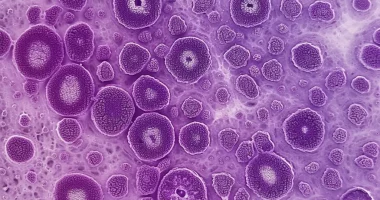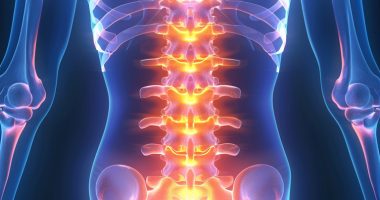Myasthenia Gravis
Overview
Myasthenia gravis, a rare and long-lasting condition, is primarily characterized by muscle weakness, significantly impacting the quality of life. This autoimmune disorder disrupts the normal communication between nerves and muscles, leading to weakness in the skeletal muscles, which are crucial for movement.
The condition predominantly affects muscles that control essential functions like eye movements, eyelid lifting, facial expressions, and mouth and throat activities, such as chewing, swallowing, and speaking. Moreover, it can extend its influence to limb muscles, affecting the ability to raise arms, grip objects, climb stairs, or rise from a seated position.
Myasthenia gravis shows no age or gender bias, as it can onset in any individual. However, it is more commonly observed in younger women, typically between 20 and 30, and men over 50. One of the more severe aspects of this condition is a myasthenia gravis crisis, where individuals might experience extreme difficulties in swallowing or breathing, requiring immediate medical attention.
Myasthenia gravis is an autoimmune condition that weakens skeletal muscles – those attached to bones, facilitating movement. It majorly targets muscles associated with voluntary movements, especially those in the eyes, face, neck, arms, and legs. Living with myasthenia gravis means adapting to varying degrees of muscle weakness, which can fluctuate in intensity over time.
Myasthenia Gravis Classification
- Congenital Myasthenia Gravis: Caused by genetic changes, this type is not autoimmune.
- Neonatal Myasthenia Gravis: Occurs when a fetus receives antibodies from a parent with myasthenia gravis, leading to temporary symptoms like a weak cry or sucking reflex, typically resolving within three months.
- Autoimmune Myasthenia Gravis: The most common form, likely caused by the production of specific antibodies. Its exact cause remains unclear.
Subtypes
- Generalized Myasthenia Gravis: Involves weakness in eye muscles and others in the face, neck, arms, legs, and throat, affecting speech, swallowing, and movement abilities.
- Ocular Myasthenia Gravis: Characterized by weakness in the eye and eyelid muscles, causing drooping eyelids or difficulty keeping eyes open. The initial symptom can often progress to a generalized form in nearly half of the cases.
Symptoms of Myasthenia Gravis
- Eyes and Facial Muscles: Common symptoms include droopy eyelids, double vision, and difficulty with facial expressions. While some only experience eye muscle weakness (ocular myasthenia), others may find the weakness spreading to other body areas. Persistent eye symptoms for over two years rarely extend further.
- Swallowing and Respiratory Function: Affected individuals may struggle with chewing, slurred speech, voice changes, swallowing difficulties, choking, and breathlessness, particularly after exercise or when lying down. In severe cases, like a myasthenic crisis involving acute breathing issues, immediate medical intervention is needed.
- Limbs and Body Strength: Weakness may also involve the neck, arms, and legs, hindering tasks such as lifting objects, standing up, climbing stairs, and personal care activities. Typically, arm muscles are more affected than those in the legs and feet, with muscle aches following exertion.
Myasthenia Gravis Diagnosis:
Diagnosis of myasthenia gravis involves a combination of reviewing the patient’s medical history, a physical examination, and several key tests:
- Anticholinesterase Test: A response to anticholinesterase medication, indicated by improved muscle strength, can confirm the condition.
- Genetic Testing: Helps in identifying any hereditary factors.
- Nerve Conduction Studies: Repetitive nerve stimulation is a crucial test for diagnosis.
- Electromyogram (EMG): Measures muscle electrical activity to detect neuromuscular abnormalities.
Furthermore, most patients with myasthenia gravis have elevated levels of acetylcholine receptor antibodies or MuSK antibodies. Imaging tests like MRI or CT scans are also used to examine the thymus gland, and EMGs evaluate nerve-muscle communication.
Myasthenia Gravis Treatment
Treatment for myasthenia gravis is personalized based on age, health, and response to therapies, with no one-size-fits-all cure. The primary goal is to enhance muscle function and prevent complications in swallowing and breathing. Many can lead normal lives with improved muscle strength, though severe cases may need help with breathing and eating. Main Treatment Approaches are:
Medications:
- Pyridostigmine: Improves nerve-muscle signals, taken multiple times daily.
- Steroids, Such as prednisolone, reduce immune system activity.
- Immunosuppressants: Like azathioprine or mycophenolate for those who don’t respond well to steroids.
Surgery:
Thymectomy: Removal of the thymus gland, often through keyhole surgery. It can reduce steroid dosage and the need for other immunosuppressants Thymectomy is available in more than 369 hospitals worldwide (https://doctor.global/results/procedures/thymectomy). For example, surgical thymus removal is performed in 4 clinics across Chilie for approximately $1.1 (https://doctor.global/clinic/hospital-clinico-de-la-universidad-de-chile#prices).
Emergency Treatment
Required during a myasthenic crisis for severe breathing or swallowing issues involving oxygen therapy, ventilators, intravenous immunoglobulin therapy, or plasmapheresis.
Lifestyle Adjustments
- Avoiding triggers such as stress, exhaustion, and certain medications.
- Regular rest and vaccinations for flu and pneumococcus, avoiding live vaccines.
- Informing healthcare providers about the condition before surgeries or medication changes.
- Consuming a nutritious diet to achieve and sustain ideal body weight and muscle strength.
- Regular exercise can enhance muscle strength, improve mood, and increase energy levels.
- Steering clear of large gatherings and refraining from interacting with individuals who have respiratory illnesses, like colds or the flu, is advisable.
Monitoring and Ongoing Management
- Regular blood tests to check medication levels.
- Long-term control of symptoms may allow for a reduction or discontinuation of certain treatments.
Complications Associated with Myasthenia Gravis:
A myasthenic crisis is the most critical complication of myasthenia gravis. It involves severe muscle weakness, particularly affecting the diaphragm and chest muscles crucial for breathing. This weakness can cause ineffective breathing and a risk of airway obstruction due to weakened throat muscles and accumulated secretions. Factors that may precipitate a myasthenic crisis include insufficient medication, respiratory infections, and various forms of stress, including emotional and post-surgical. Severe cases may require mechanical ventilation to assist breathing until treatments improve muscle strength. Furthermore, prolonged use of medications for myasthenia gravis might result in additional complications, such as opportunistic infections and lymphoproliferative disorders.





